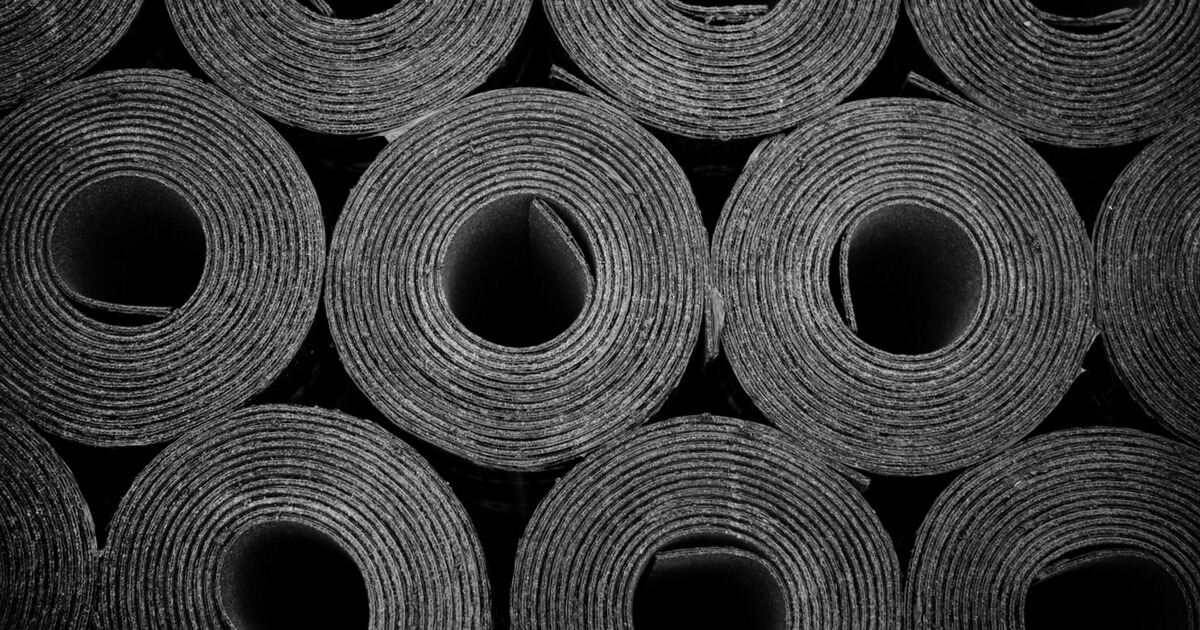What does roofing felt do and what are the benefits?
Well, the original purpose for using roofing felt was to be a temporary waterproof roof whilst homeowners would have to build their own roofs.
This method has been used for over one hundred years.
When homeowners would remove the shingles off their roof on a weekend, the roofing felt would serve as a waterproof cover.
This would temporarily protect their home from water damage over the following week so that the next weekend they could put the new shingles up.
WHAT DOES ROOFING FELT DO
While people are debating on whether roofing felt – otherwise known are tar paper – is still necessary, here are a few reasons why it is still useful.
While roofers workers are up fixing the shingles to the roof, the roofing felt creates a safer layer for them to work on, helping to make it less likely that they could slip.
By covering your home with roofing felt, your home is temporarily protected from the weather depending on how long it takes to build the roof, creating a waterproof barrier between you and any rain that could potentially come.
Another handy advantage is that the roofing felt does temporarily dry once the roof is up and complete.
ROOF FELT AS A MOISTURE BARRIER
A great benefit to roofing felt is that it can also act as a moisture barrier.
When the hot air is rising through the house and reaches the roof, any moisture in the air that condenses on the underside of the shingles, will get caught by the roofing felt.
This helps to prevent any damage being done to the wood decking in the long run.
The moisture barrier in a roof is highly important nowadays since the way houses are now built with certain extras such as double glazing making air circulation more of a problem.
We spend so much time in our homes and throughout cooking, bathing along with all of the occupants in the house breathing, a lot of water moisture gets built up and needs to find a way out.
This brings us to the question of the types of roofing felt that we should use.
IS FELT WATERPROOF?
The answer is Yes felt is waterproof, the sarking felt which is laid over support rafters or counter battens, beneath the tile or slate battens provides waterproofing.
The main purpose of sarking felt is to provide waterproofing to the felt, this stops damage internally creating a barrier and stopping cracked/broken tiles it also helps as an insulation factor for the building.
ROOF FELT TYPES SIZES
There are two different types of roofing felt, #15 and #30.
The only difference between the two are the strength.
#30 is stronger, meaning that throughout the roof building process.
The material is less likely to tear and also creates a much safer working environment for the builders unlike #15.
The best way to decide which one to buy is mainly dependent on how long you reckon the job will take.
If you are planning for the roof to take around three weeks to complete, then you are better off buying #30 as it will be stronger to survive through the weather.
However, if you are not planning for the job to take as long then #15 will be best since it won’t be open to the weather as long.
Any moisture in the house once the roof is complete, will be able to pass through the roofing felt better which is what we want so that the house can get a better air circulation.
DEBUNKING THE MYTHS OF ROOF FELT
Many people have been led to believe that when roofers install roofing felt the shingles on your roof spring a leak the roofing felt will act as a waterproof preventing the water from entering your home.
What you need to remember is that once the roof construction process is complete, the roof felt has loads of holes in from nails, where the roof tiles have had to be secured to the roof.
Roofing felt is definitely not a long-term solution for these kinds of problems. We’ve covered a fair few bits and answered the question as to what does roofing felt do.
WHAT IS THE PURPOSE OF FELT UNDER ROOF TILES?
Roofing felt is usually required under roof tiles to prevent the desk from being exposed, it also may be applied as your roof deck may not lie perfectly straight. A layer of roof felt gives you an even surface to install tiles/shingles.
The building regulations for most areas in UK & Scotland require sarking underneath the slates or tiles and can be known as underpayment.
Need your roof changed or advice on roofing felt – contact us now:
